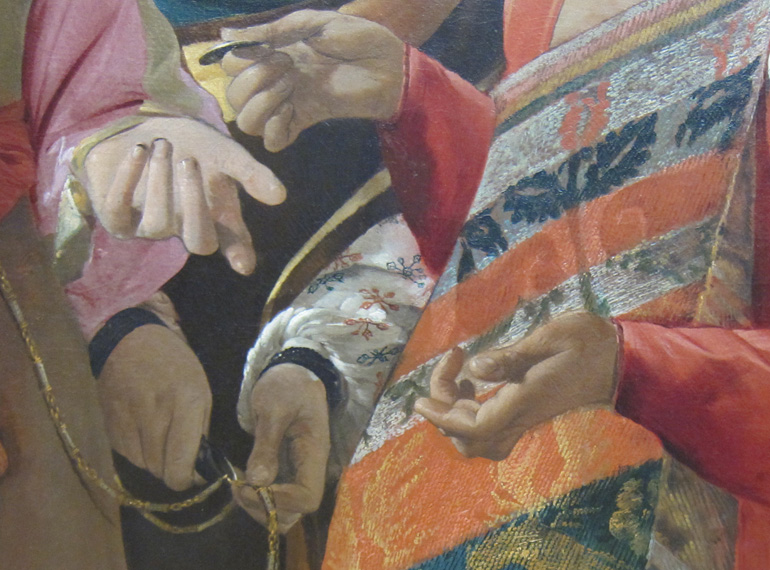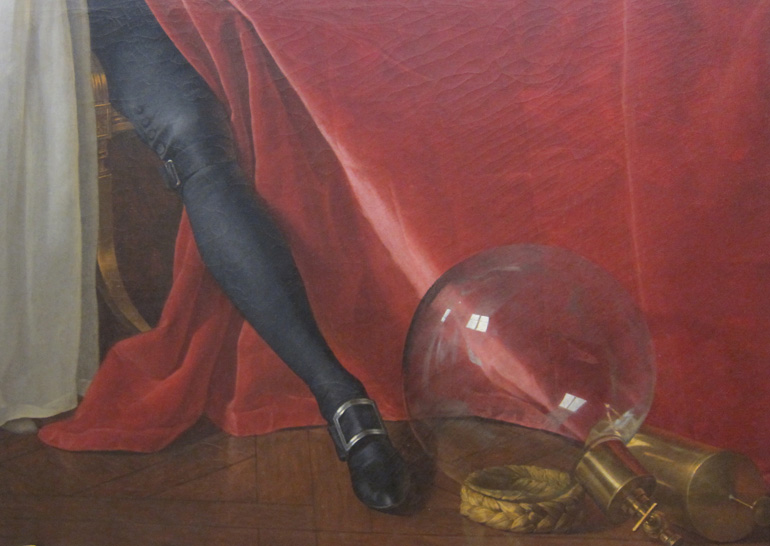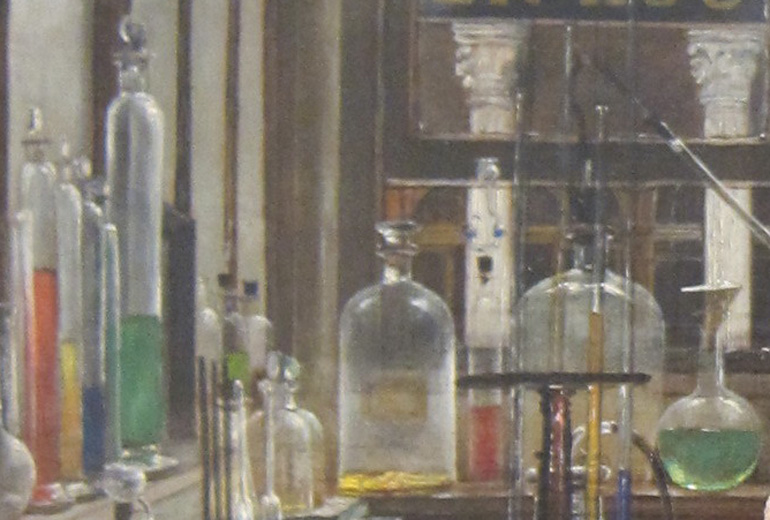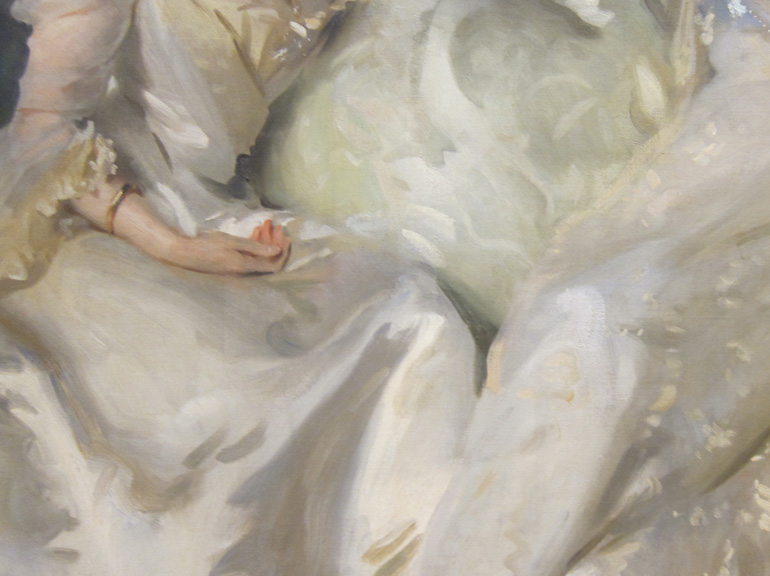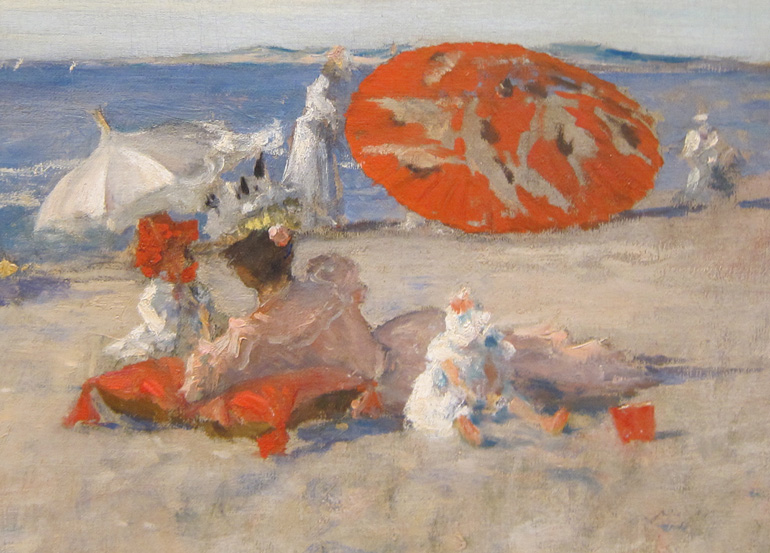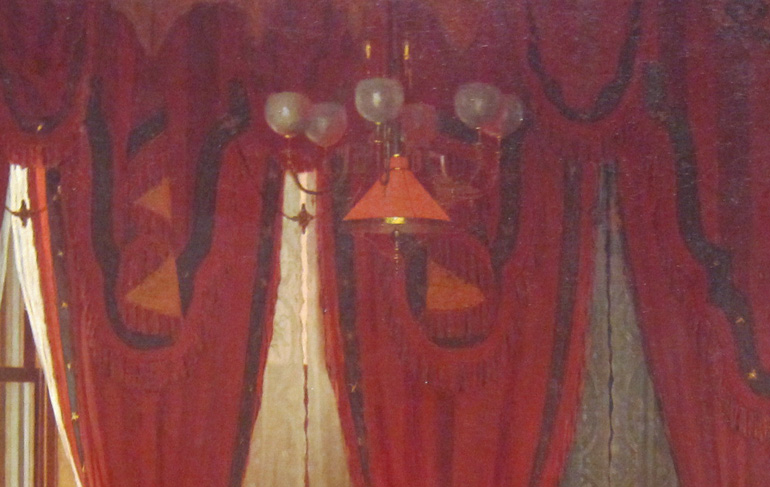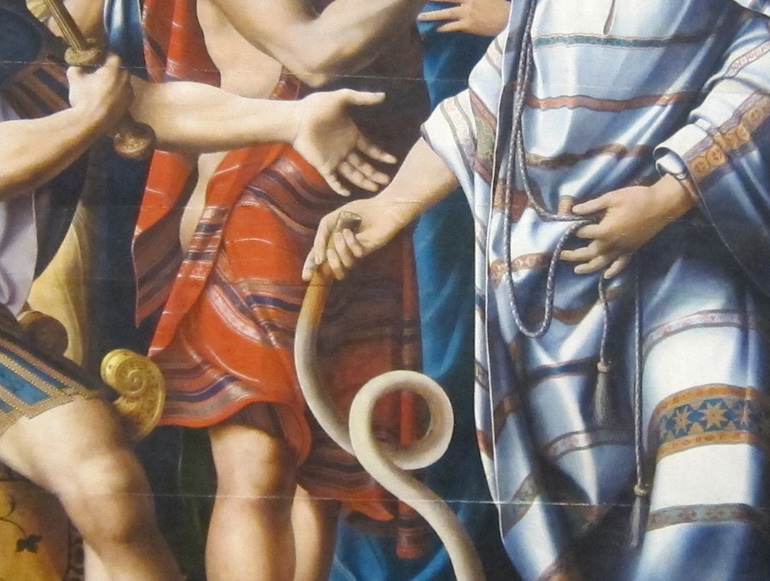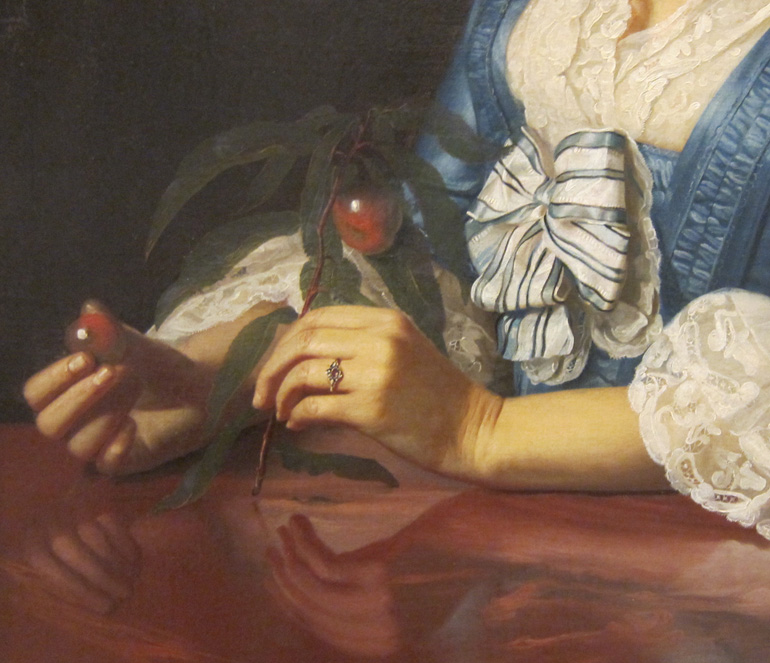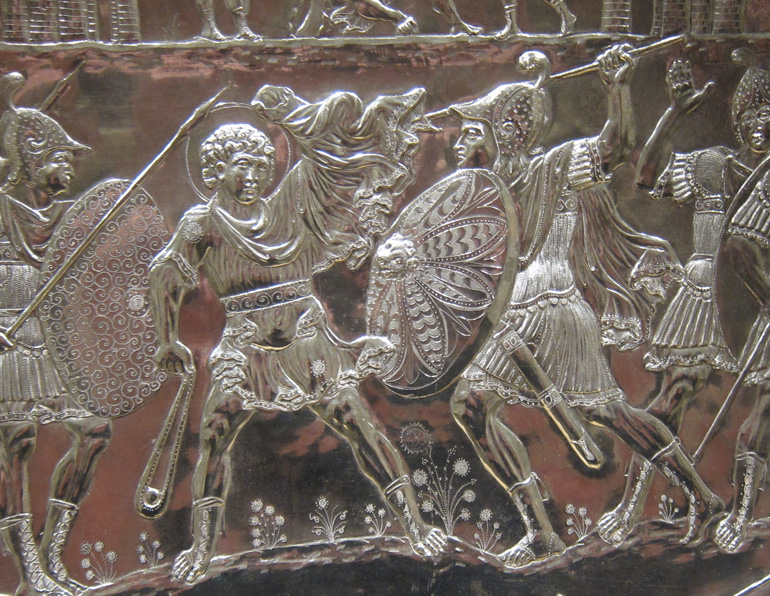
Kathleen Moriarty
Grand settings — impressionistically sketched, to be sure, so as not to bog down the drama in inorganic detail — are common in the novels of Henry James, but in his final masterpiece, The Golden Bowl, they become the rule rather than the occasional exception. James’s treatment of Fawns, the immense country house in Kent, is characteristic: he suggests that the place is simply too large to compass, so he doesn’t even try. The terrace front at Matcham, before which one of the novel’s most thrilling — and most hushed — scenes plays out, is also unimaginably long, and with its view of three cathedral towns it appears to float on a magic carpet over the Cotswold countryside instead of rudely surmounting it. We are encouraged to imagine that the London houses occupied by Adam Verver and his daughter, Maggie, in Eaton Square and Portland Place, respectively, are larger than they might possibly, in actuality, be. Colonel and Mrs Assingham live in Cadogan Place, not meant to be especially grand by James but grand enough today. Even the queer little antiquarian shop in Bloomsbury, however faded in 1904, has been polished up by that quarter’s subsequent history, and it is also associated with the one great old pile that the reader can visit in person, the British Museum. Everywhere in The Golden Bowl, one stands as if in halls too vast to make out, the distant corners of which, far from being dark or obscure, seem to dissolve in mists of great wealth.
The irony of this gift for imaginative stage-setting is as immense as Fawns, for it embodies James’s dismal failure as a playwright — the great disappointment of his professional career — in a novel that is as intensely dramatic as anything ever performed on the stage. James’s demands of the theatre and of theatre audiences were so excessive that he would be completely forgotten today if he had not learned to mount his productions, on tour as it were, in individual readers’ minds, where among other things he could count on finding the necessary props, flats, and costumes ready to hand and supplied at no charge. (Most important, James could take full advantage of the novel-reader’s willingness to devote not hours but days to sitting through the show — with all the comforts of home.) All he need do was to write out the lines of dialogue. Even then, however, he might not have amounted to much, for the dialogue in his novels usually follows a crisis, instead of leading up to one, and works primarily as a relaxation of dramatic tension. The stuff of his novels is something beyond the reach of the most accomplished theatrical company. The bulk of The Golden Bowl, as it is in all of James’s novels, is given over to the description — in this case, sharply, even bewilderingly articulate — of his characters’ impressions, and the inferences that they draw from these impressions. James is, profoundly, not a psychological novelist. He could not be less interested in motivations; he takes them completely for granted. And why not? His people want nothing but money and/or love. (More rarely, as in The American, they want power as well, but this, too, is an elemental lust.) The complications of James’s mental interiors lie not with the observing character but with the character observed, to whose interior we are not, for the moment, granted admission. It is probably best to conceive of these interiors, not as located within any of the characters’ minds, but rather as observatories into which certain characters are placed by the stage-directing author. These observatories, it must be noted, are very unlike the houses and gardens in which James’s characters outwardly move. They are as dark as deep caves, and lighted only, when lighted at all, by pinpoints of insight.
But I would propose that, if James is reluctantly happy to liberate his reader from prolonged confinement to a chair in the stalls, he is nonetheless not willing to dispense with the salience of location that reminds us where we are when we go to see a play. Re-reading The Golden Bowl for the fourth or fifth time last week, I found myself not only sitting up straight but, unaccountably, fretting that my shoes needed polishing. I was also quite conscious of my perch, in a well-appointed hotel living room, with an interesting vista of San Francisco that might, thanks to my ignorance, stand in for the view of Florence from Fiesole that it has not been my good fortune to see for myself. The suite was quiet and everything was in order. This seemed unnaturally important until I recognized that James was solemnizing the reading of his story by creating for it a virtual architecture that adds, to all the emotions triggered within the tale, a readerly awe. The Golden Bowl is itself a palace, an assemblage of rooms, great and small (mostly great), indoors and out (always thrilling when out), through which the reader is guided, in a sequence of scenes that are as clearly demarcated, as by the fall of a curtain, as are the acts of a play.
Movement from one room to another occurs during the intermissions. Between Book First and Book Second, for example, several years pass, and the Prince and Maggie not only marry but become parents, their little son, the Principino, born in New York, of all places. Between Book Second and Book Third, a deeper transformation occurs, as Charlotte becomes not only Mrs Adam Verver but also a bored housewife. Then we have the jump from Part One, “The Prince,” to Part Two, “The Princess,” which is a shift in focus that entails no gap in time whatsoever. Both Parts, all six of the Books, and most of the constituent chapters transpire in different wings, apartments, or parterres of the huge palace conjured by Adam Verver’s millions. The longest of the Books, also the most exciting, is the Fourth; for the re-reader who can remember what’s going to happen, it takes place in a long dim nave, at the end of which stands the vessel of the title atop a chimney-piece, bathed in a sullen glow.
The golden bowl is the physical token of everything that happens to Maggie Verver in this novel. It represents the secrets that were deemed too dark, or at any rate too unsettling, to share with her before she married the Prince. It represents the righteous American morality of a respectable American heiress whose good name is her only important asset. It represents the girl whom Maggie outgrows in the course of Book Fourth; in fragments, having been sent crashing not by Maggie but by her sometime deceive, Fanny Assingham, it represents her molted skin. When the bowl is broken, Maggie becomes in reality what she has long been in title, a true Italian princess, as ruthless as a Borgia in keeping what belongs to her. Not so much as a whisper of outrage at her gross betrayal at the hands of her husband and best friend (and mother-in-law!) crosses Maggie’s lips. Not a scintilla of recrimination takes shape in her throat. Maggie contents herself with a couple of hard, silent stares. Then she packs her rival off to the trans-Mississippian wastes of American City (oh, the horror!), and lets her husband give her a big hug.
It kept him before her therefore, taking in — or trying to — what she so wonderfully gave. He tried, too clearly, to please her — meet her in her own way; but with the result only that, close to her, her face kept before him, his hands holding her shoulders, his whole act enclosing her, he presently echoed: ‘”See’? I see nothing but you.” And the truth of it had with this force after a moment so strangely lighted his eyes that as for pity and dread of them she buried her own in his breast.
I run ahead; that’s the end of the novel, not the end of Book Fourth, which consists of a very different exchange between Prince and Princess. It is this earlier exchange that shows Maggie to her husband in a new light. To put it into the language that we might allow ourselves today, what Maggie says to the Prince is this: “Bearing in mind that you are still my husband, and that you are going to go on being my husband, go fuck yourself.” And, in that moment, the Prince abandons his lover, not just out of duty or prudence but because he has fallen in love with someone else, or at any rate — it comes to the same thing — discovered that his wife is more interesting than his mistress.
The curtain thuds to the boards. When it rises, the scene is familiar but the atmosphere new and rather awful. In Books Fifth and Sixth, Maggie is the spectator of a passion play that she has written and produced, entitled The Agony of Charlotte Stant. Fawns has become a chamber of horrors through which Charlotte stumbles in miserable ignorance, denied access to one of the author’s observatories because there would be nothing to observe, so in control of the situation is our “little” princess. True, Maggie has a few lines in this melodrama, but their importance consists entirely in their perverse incommunicativeness. Like a well-prepared and disciplined witness under cross-examination, Maggie volunteers nothing and concurs in no speculative lines of inquiry. Unlike a good witness — and unlike the nice American girl that she used to be — Maggie also perjures herself. She does so in part to bundle herself offstage, so that the show may go on. The virtual room in which James has placed us is the bustling saloon of an auction house, where everything in the plutocratic collection is being knocked down, not least its mistress and principle cicerone, the tall, proud, glorious, but unenviable Charlotte.
***
It had never occurred to me before I conceived the heading for this entry, but “Verver,” which sounds a lot like “fervor” in English, takes on a Venetian cast — Vairvair — when placed next to the Italian for “palace.” In either language, the name speaks to truth, but the truth of the novel is not one with which Americans are comfortable even yet. It is this: virtue, in the end, is inescapably an abstraction, acknowledged in its generality by millions, but love is the most peculiar, and therefore precious, reality in the world.
When I went out to lunch yesterday, I made sure to have my shoes shined. I even toted along a second pair.







